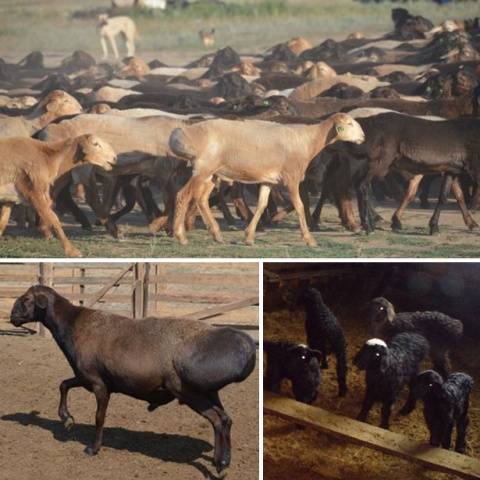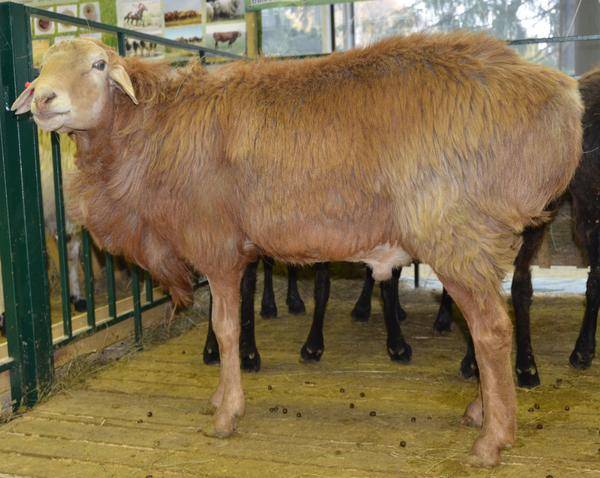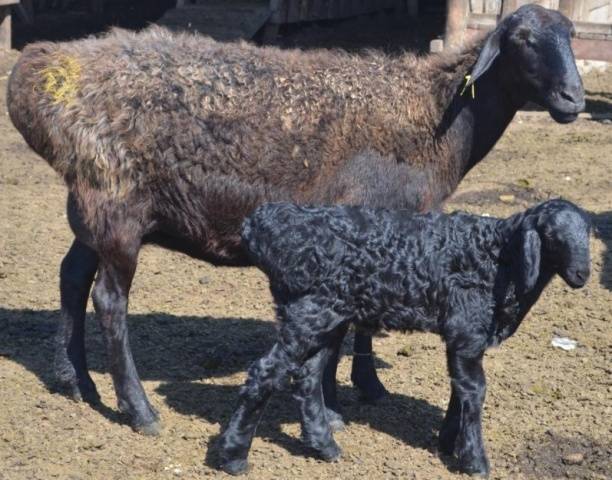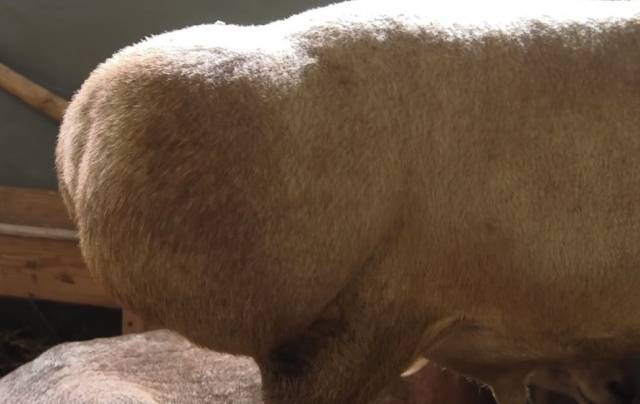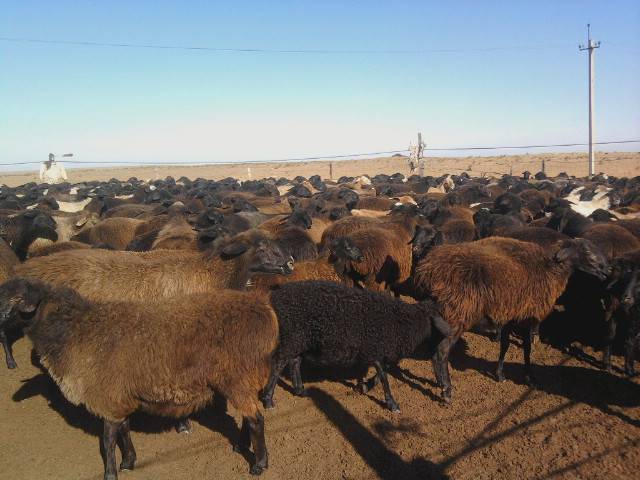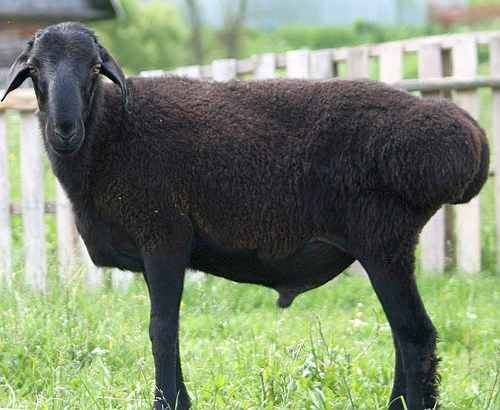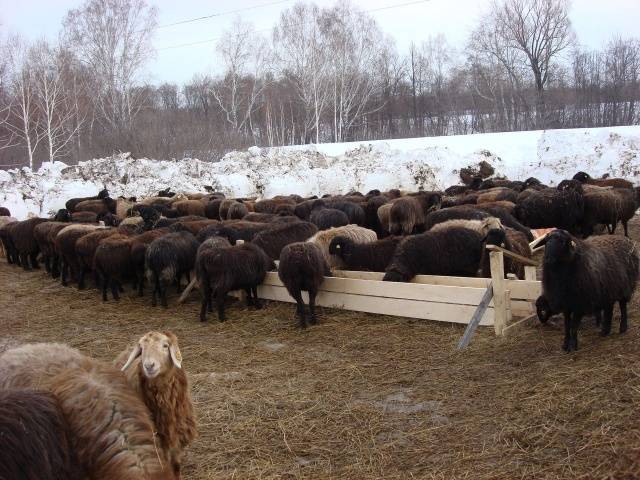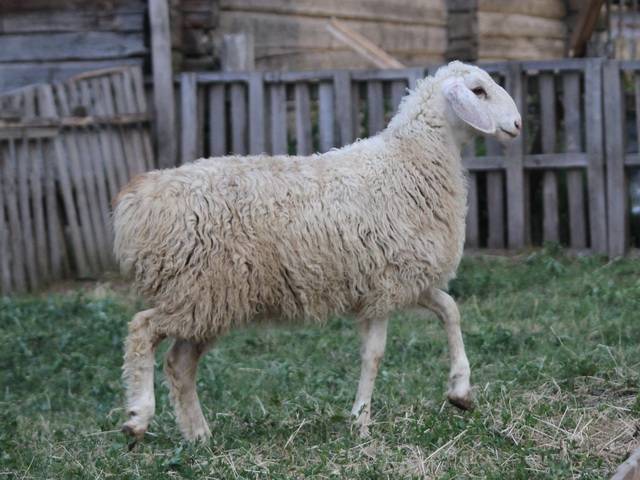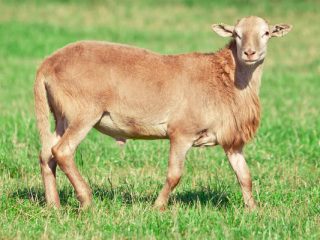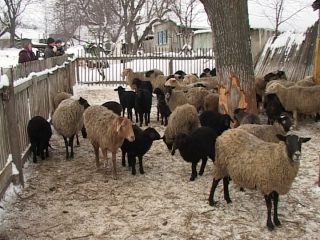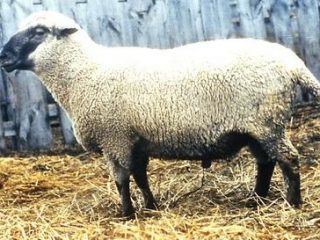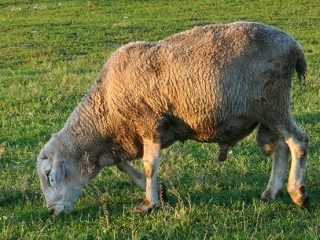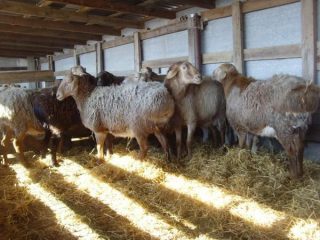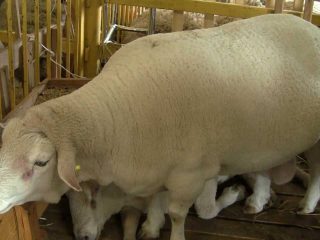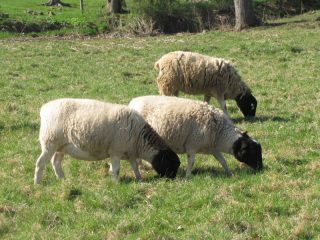Content
In the region of Central Asia it has been practiced since ancient times. sheep breeding meat and greasy direction. Lamb lard is considered a valuable product among Central Asian peoples. Along the way, wool is obtained from these coarse-wool sheep for felting.
One of the most common breeds of meat and fat fat tail breeds are Edilbaev sheep.
The homeland of this breed is Kazakhstan. The standard stereotype of a resident of the European part of Russia in relation to Kazakhstan: a very hot country. In reality this is not the case at all. Kazakhstan is located in the center of the continent and has a sharply continental climate, that is, hot summers and cold winters.
The Edilbaev breed of sheep was bred to live in such conditions. Sheep store fat reserves in the back part of the body, the so-called “fat tail,” which is why they get the name “fat tail.” The Edilbaevites gain fat quickly, since in the summer the Kazakh steppe burns out and there is nothing to eat in it. Since summer is hot, fat evenly distributed throughout the body would contribute to overheating of the sheep. Animals that are unable to “store fat separately” usually lose weight in the summer.
The weight of the fat tail of the Edilbaev breed can reach 15 kg.Thanks to such fat reserves, Edilbaev sheep can easily withstand both summers with dried grass and cold winters. Edilbaevites are animals adapted to nomadic life and capable of traveling long distances in search of food.
The Edilbaevskaya breed, in fact, is a lifesaver for the Kazakhs, since, in addition to lamb fat, the Edilbaevskaya sheep can produce fairly high-quality meat and sheep milk.
Productive characteristics
The weight of an adult Edilbaev ram can reach up to 145 kg, and a ewe up to 110 kg. The Edilbaev sheep are inferior in size to the Gissar sheep, about which there is a constant debate. Some believe that the Edilbaev breed is actually the Gissar breed. If you look at the map, the conclusion suggests itself: these breeds are related to each other. The borders between former republics, and now states, in many places were clearly drawn along a line. The population of local animals probably mixed with each other.
Edilbaevskaya breed at the All-Russian Sheep Exhibition in Elista
Edilbaevs belong to a coarse-wool breed of sheep; from them you can get 3–4 kg of wool per year. Coarse wool sheep need to be sheared once a year in the spring. As a source of wool, the Edilbaev breed of sheep is not of particular value.
As a breed of nomads, Edilbaevs are valuable for their endurance and versatility. In addition to meat and fat, up to 120 liters of milk with a fat content of 6–8% can be obtained from an Edilbaev ewe. The milk of Edilbaev residents is suitable for making fermented milk products, as well as cheese and butter. It is the tradition of Central Asian peoples to make cheeses from sheep’s milk, not cow’s milk. And the Edilbaevskaya breed was bred with an eye to high milk production for sheep.
The breed is characterized by early maturity.By the age of 4 months, the weight of Edilbaev lambs reaches 40–45 kg. At this age, lambs can already be slaughtered for meat.
The fertility of Edilbaev sheep is low. Usually only one lamb is born. Sheep have a gestation period of 5 months, so it will not be possible to squeeze more than two lambings out of a sheep in a year.
In the photo there is an Edilbaev ewe with a lamb.
The ewe's body must have time to recover after the birth of the lamb.
Edilbaevsky breed standard
Edilbaevs are strong, hardy animals with relatively long legs, indicating their adaptability to long journeys. Height at the withers is from 80 cm. The fat tail is well developed and, in normal condition, clearly stands out on the croup of the sheep.
The color of the Edilbaevs is usually monochromatic. The color can be black, red or brown.
The Edilbaevs have no horns and drooping ears.
Content
At home, this breed is kept on open pastures almost all year round. Thanks to the fat tail, Edilbaevites are able to withstand jute that is not too long. Thanks to their endurance, unpretentiousness and high productive characteristics, Edilbaevs began to be bred in Russia. And here the ability of animals to constantly live in the open air played a cruel joke on the Edilbaevites.
The weak point of these sheep is their hooves. In the absence of constant transitions and being kept in the same pen, the hoof horn begins to deteriorate. Sheep somehow breed dirt and dampness, and their hooves are adapted to dry soil.During normal nomadic life, sheep's hooves wear down on rocky ground; when kept in a pen, the hoof wall grows and begins to interfere with the animals. The sheep begin to limp.
When kept in damp conditions, the hooves become infected with a fungus that causes hoof rot, which is very difficult to get rid of, since the main cure in this case is constant movement so that the hooves have a normal supply of blood. Antifungal agents are ineffective, the fungus appears again.
Thus, Edilbaevs require a dry, clean room to avoid hoof diseases.
To avoid stirring the clay, a thick layer of bedding must be laid on an adobe floor, but the floors will still require repairs every year.
It is also necessary to lay a generous amount of bedding on a concrete or asphalt floor, since Edilbaevites get cold and get sick on bare stone, but such floors are durable.
Recommendations to keep Edilbaev sheep on a wooden flooring, at first glance, seem reasonable, but urine flows into the cracks between the boards, and anyone can easily find the house where the sheep are kept by the smell. In addition, ammonia fumes are extremely harmful to the breed, which was bred to be kept outdoors all year round.
The best option is rubber mats for livestock, which save bedding, are warm enough and are easy to clean. Unfortunately, they are expensive, although durable.
The sheep shed should not be too warm. It must reliably protect against drafts and have good ventilation. Most animals are not afraid of the cold.When there is enough food, they warm themselves with food. Animals warm the air in the room with their breath. A large temperature difference between indoors and outdoors leads to respiratory diseases.
This is explained by the fact that the lamb is born wet and can die from hypothermia before it dries out.
Feeding Edilbaevites
The Edilbaevskaya breed has the ability to quickly fatten up on green grass while the grass is still wet. In the spring-summer season, sheep need to add salt to their diet if the flock does not graze on salt licks.
In summer, Edilbaevs can eat on the grass without needing other food. In winter, in addition to hay, concentrates are added to the diet of sheep at the rate of 200 - 400 g per head per day. In addition, feed chalk and vitamin and mineral premixes are added to the diet.
Many sheep farmers believe that sheep do not need water in winter; they can “get drunk” with snow. This is a fundamentally wrong idea, since snow is distilled water without the mineral salts necessary for the body. Snow not only does not meet the mineral needs of animals, but also washes trace elements and minerals from the body. The best option in winter is to install heated drinking bowls. You can use the principle of a thermos if it is not possible to equip it with heating. But in this case, you will have to frequently add hot water to the drinking bowl.
Breeding
In fact, one of the advantages of the Edilbaev breed is their low fertility. By bringing one, or maximum two, lambs per lamb, the ewe has the opportunity to feed strong, strong offspring. Edilbaevsky ewes are distinguished by high milk yields. If a person does not take sheep’s milk for his needs, it all goes to the lamb, which by the age of 4 months often exceeds other breeds of sheep in size.
Measurements and weighing of 3-4 month old Edilbaev rams
At the time of mating, ewes should be well-fed, since with insufficient fatness, the number of dry ewes increases by 4–5 times. And here the fat tail of the Edilbaev breed plays into the hands of the owners. Even in the event of force majeure, the Edilbaev ewe has a greater chance of successfully inseminating than a sheep that does not have fat reserves.
If you want to lamb in the spring, ewes should be bred to rams in mid-autumn. If winter lambing is planned, then the rams are released into the flock in the summer.
In the first half of pregnancy, the needs of the ewe do not differ from the needs of the drying ewe. The ewe is given plenty of green grass or hay, 200 g of concentrates per day and 10 g of table salt.
But if it is possible to provide compound feed for sheep, it is better to give it, thus reducing the deficiency of vitamins and minerals.
In the second half of pregnancy, the ewe's need for nutrients and energy increases. If the second half of pregnancy occurs in winter, it is necessary to carefully monitor the presence of minerals and vitamins in the ewe’s diet.
If the ewe is not adequately fed, the viability of the embryo decreases.
A sheep ready to lamb is placed separately from the rest of the flock. The air temperature during lambing should not be lower than +10°C. Fresh straw is laid on the floor in a thick layer. After lambing, the lamb is thoroughly dried and presented to the sheep. You definitely need to check the placenta. It must be the whole thing. If pieces of the placenta are missing, you need to monitor the condition of the sheep for a couple of days. You may need help from a veterinarian.
Diet of a lactating ewe
For the first 2–3 days, the lambed ewe is kept only on high-quality bean hay to avoid the development of mastitis. Later, they slowly begin to introduce concentrates, bringing their amount to half a kilogram per day. After 1 - 1.5 weeks, succulent feed is gradually added to the ewe’s diet, bringing its quantity to 2 kg, and high-quality silage, also in the amount of 2 kg per day.
The ewe's need for high-quality hay is also 2 kg. Thus, in total, the ewe receives 6.5 kg of feed per day.
Salt and vitamin-mineral supplements are required in the diet.
Owner reviews
Conclusion
Taking into account the fact that sheep breeding in Russia was more focused on obtaining wool from sheep, Russian meat and meat-fat breeds are practically absent. With some stretch, the Astrakhan breed can be called a meat breed, but it was also bred for its skin - Astrakhan. The Edilbaevskaya breed is quite capable of filling the empty niche of meat sheep breeds. The Edilbaevs are second only to the Gissar breed, which is considered the largest in the world. But there are no Gissars in Russia, and the Edilbaev ones are already being bred not only by large farms, but also by private owners.It is much easier to buy the Edilbaevsky breed.
